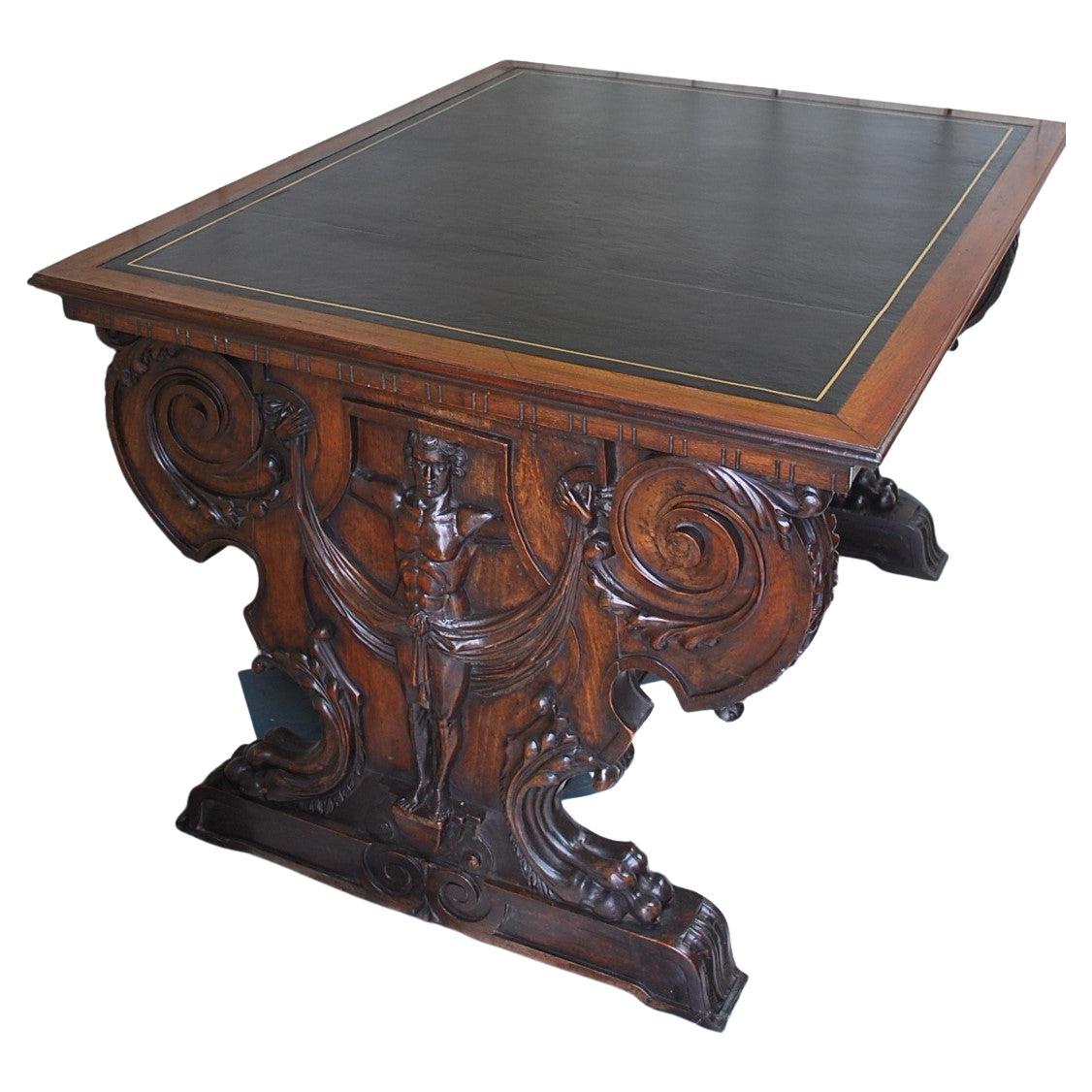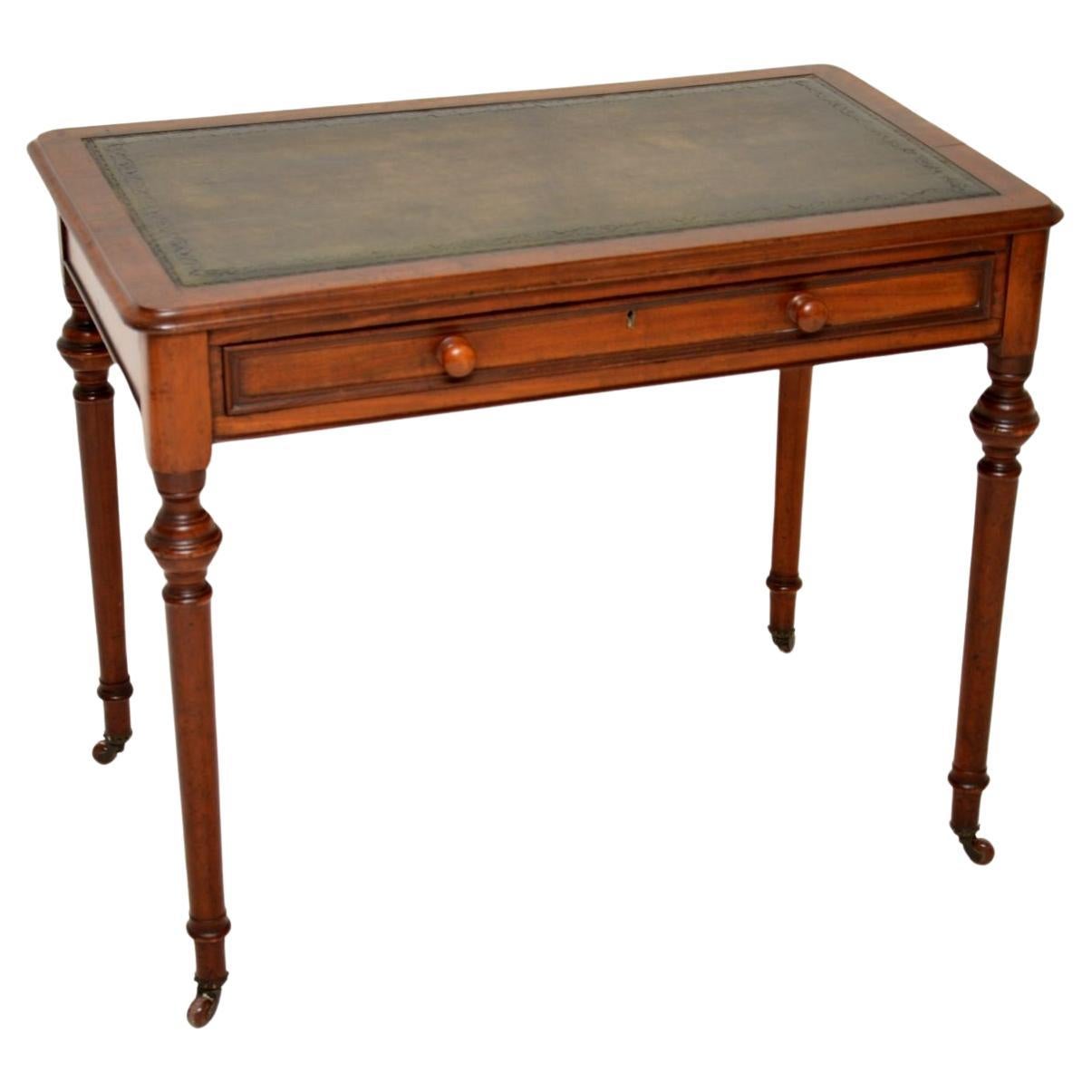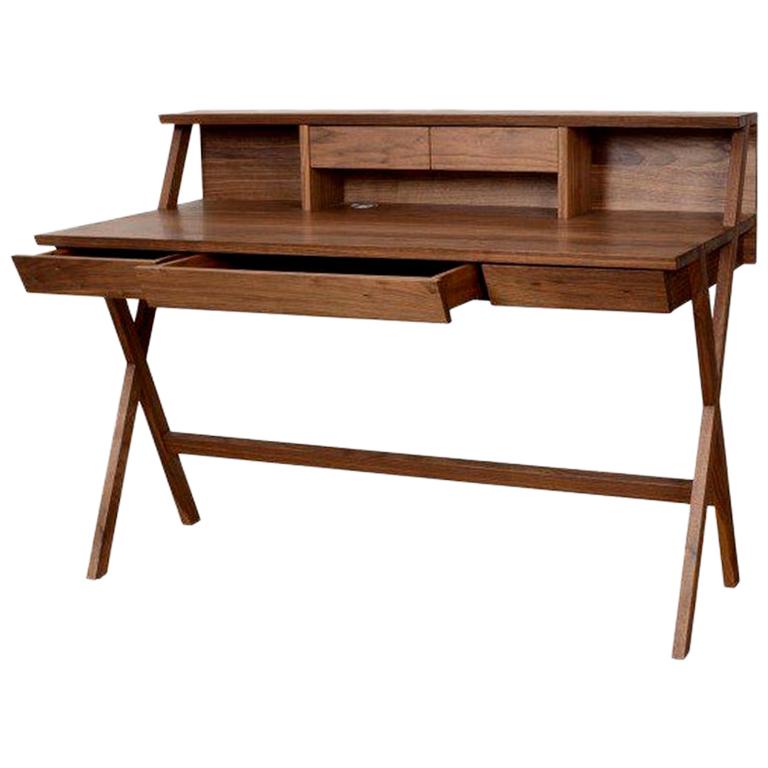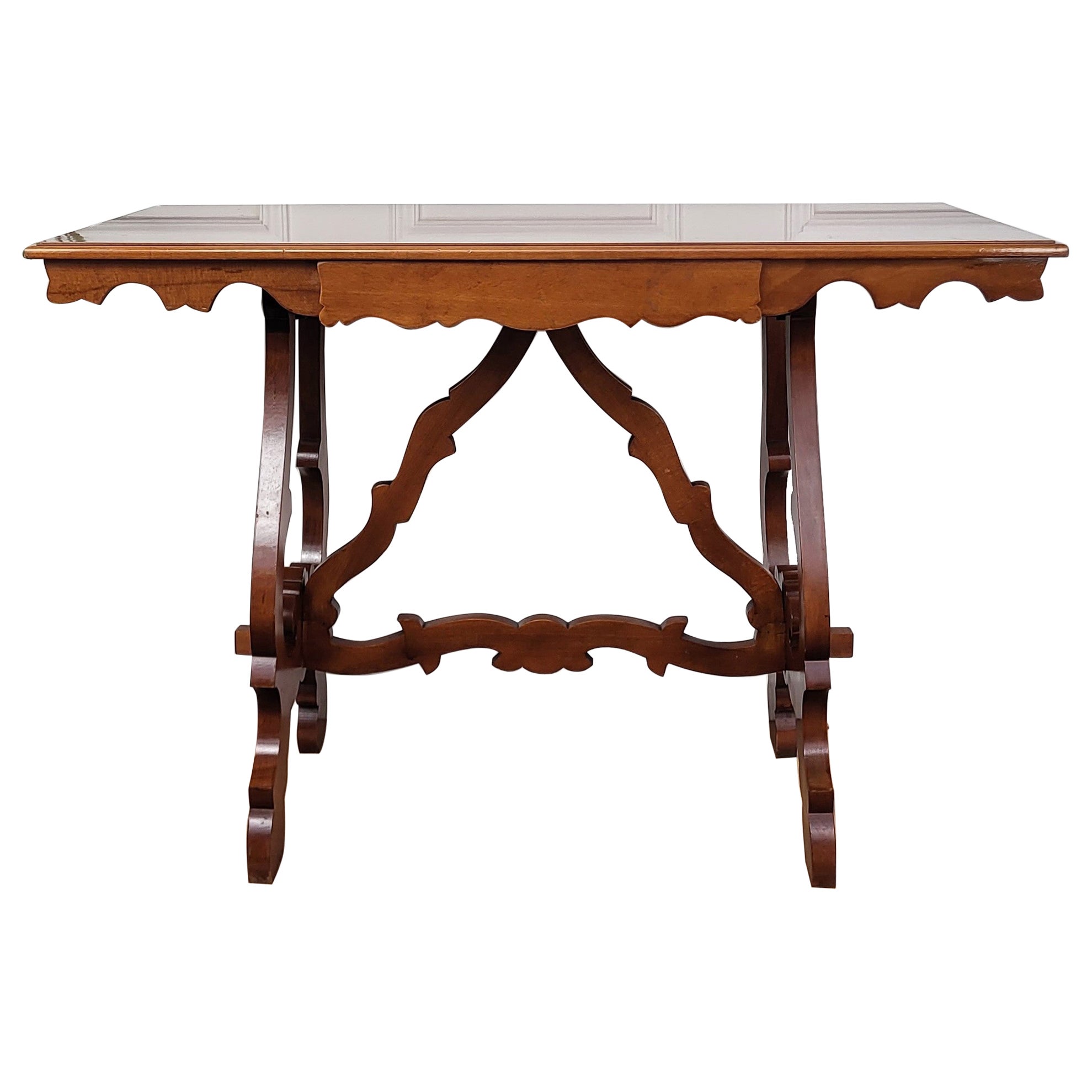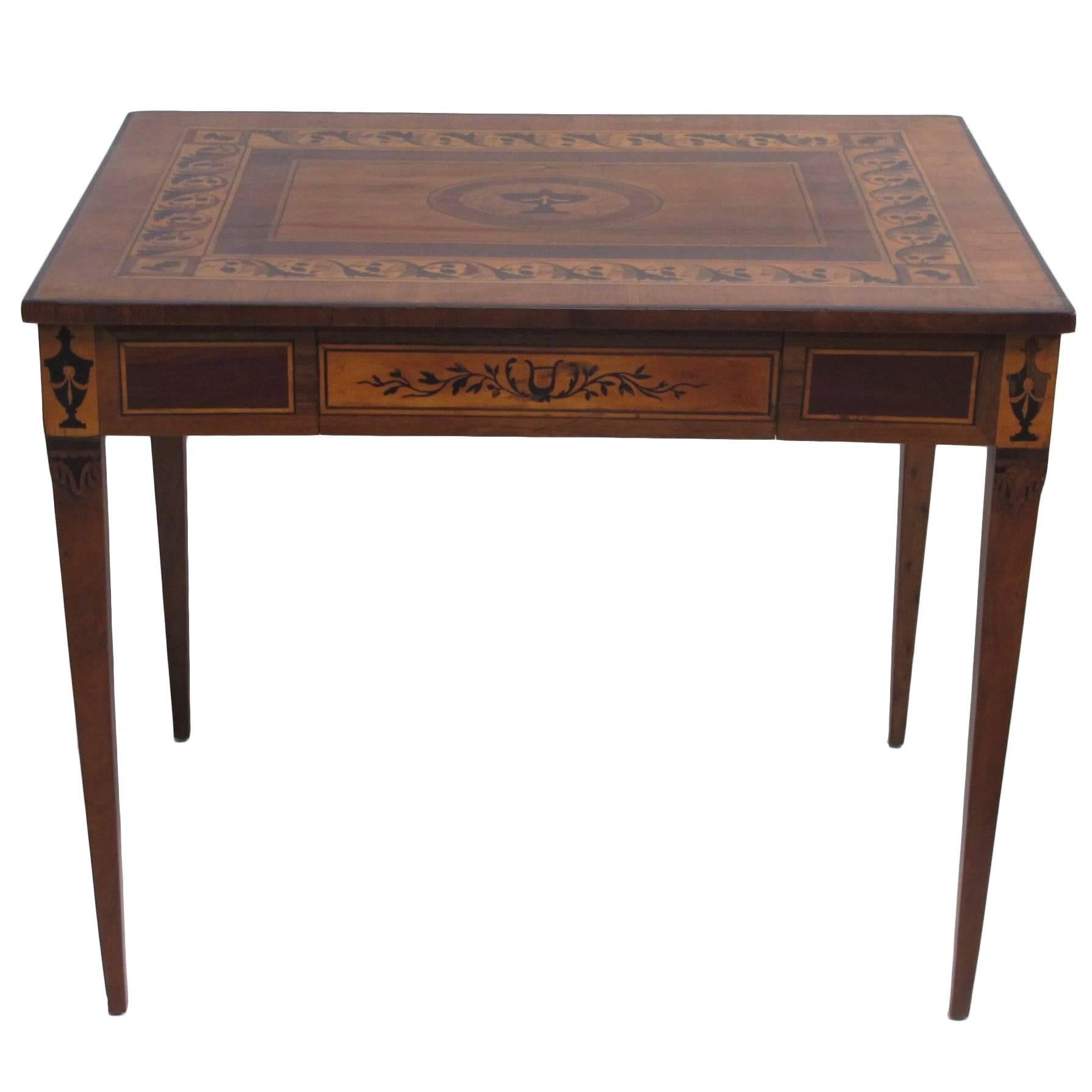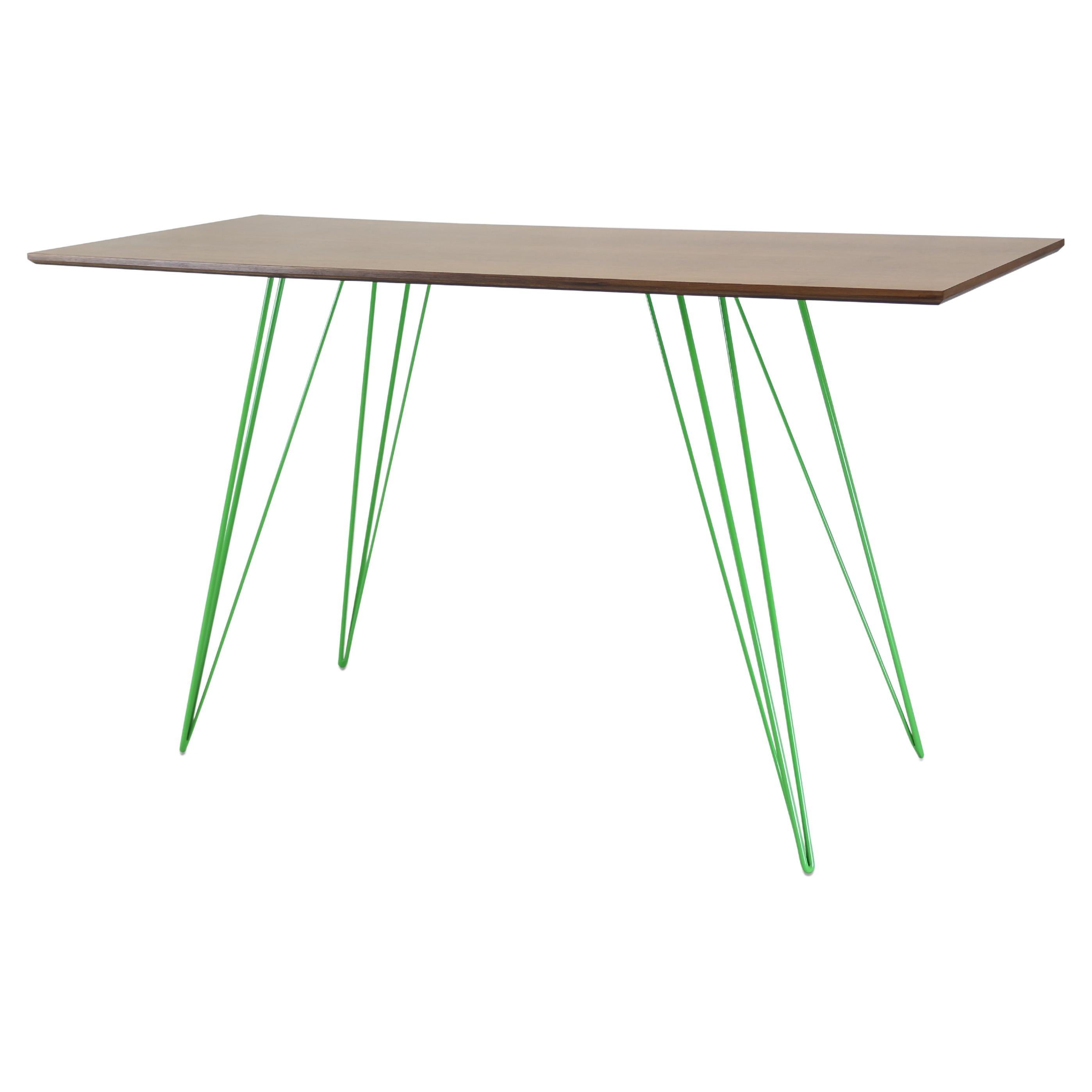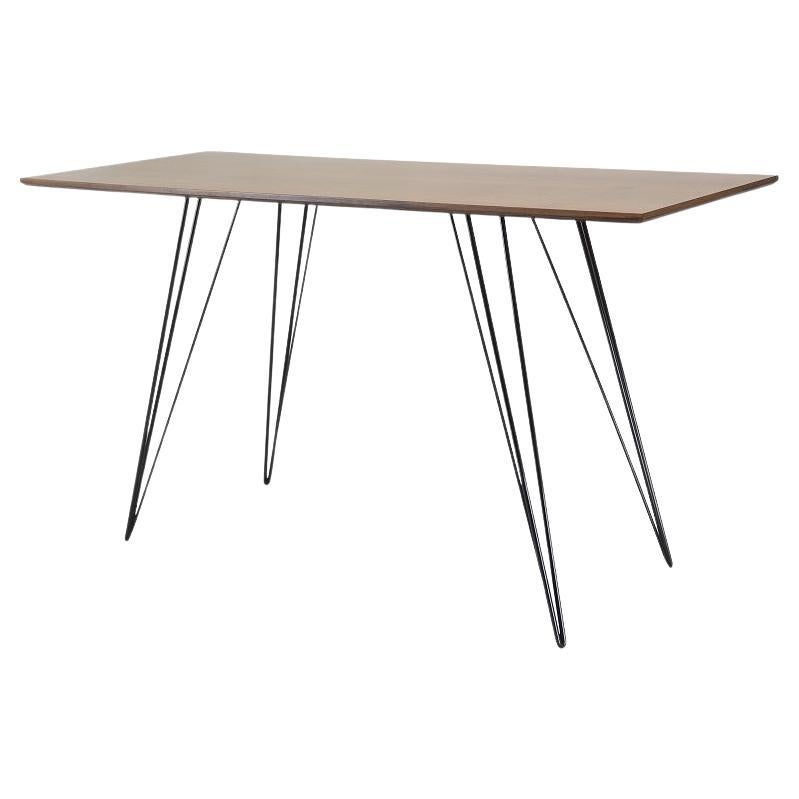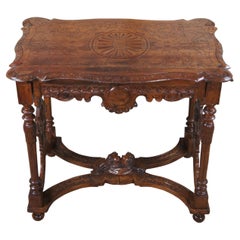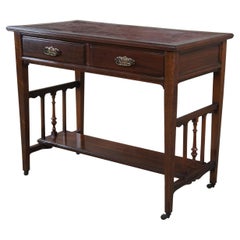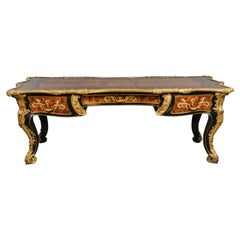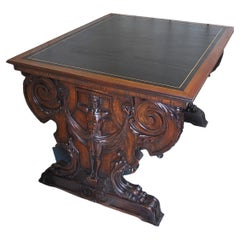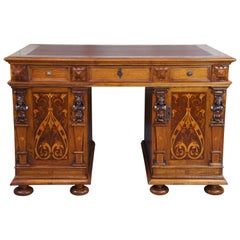
Antique Italian Neoclassical Walnut Marquetry Figural Writing Desk Library Table
View Similar Items
Want more images or videos?
Request additional images or videos from the seller
1 of 13
Antique Italian Neoclassical Walnut Marquetry Figural Writing Desk Library Table
About the Item
- Dimensions:Height: 30 in (76.2 cm)Width: 49 in (124.46 cm)Depth: 30.75 in (78.11 cm)
- Style:Neoclassical (In the Style Of)
- Materials and Techniques:
- Period:
- Date of Manufacture:Early 1900s
- Condition:Wear consistent with age and use. Good antique condition, some distressing commensurate with age, slight veneer wear, see pictures.
- Seller Location:Dayton, OH
- Reference Number:Seller: 289311stDibs: LU5343222754662
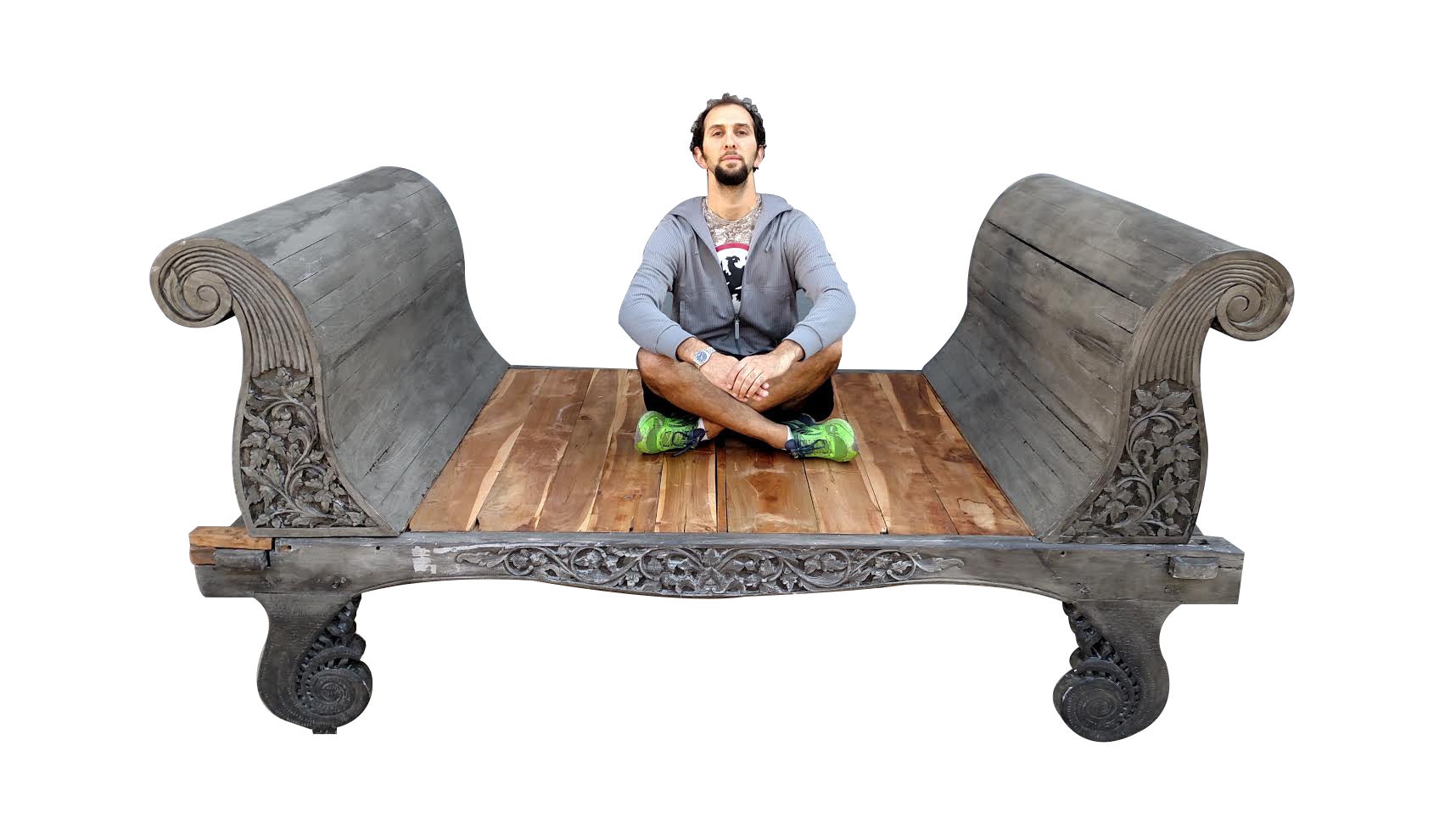
About the Seller
4.9
Platinum Seller
These expertly vetted sellers are 1stDibs' most experienced sellers and are rated highest by our customers.
Established in 2010
1stDibs seller since 2020
1,121 sales on 1stDibs
More From This SellerView All
- Antique Italian Renaissance Revival Walnut Figural Library Table Writing Desk 52Located in Dayton, OHAntique Neo-Renaissance Revival parlor / library table or writing desk, circa 1870s Made of walnut featuring Neoclassical styling with high relief figural carvings of cherubs / putti...Category
Antique 1870s Renaissance Desks and Writing Tables
MaterialsWalnut
- Antique Chippendale Mahogany Kneehole Bowfront Library Office Table Writing DeskLocated in Dayton, OHAntique Chippendale style kneehole writing desk featuring rectangular form with bowfront, eight drawers, brass batwing hardware and polished glass top. Originally purchased at the Rike Kumler...Category
Early 20th Century Chippendale Desks and Writing Tables
MaterialsMahogany
- Antique Thomas Turner Manchester English Mahogany Writing Desk Library TableBy Thomas TurnerLocated in Dayton, OH"An antique Thomas Turner English Victorian era writing desk. Made from solid mahogany with a tooled red leather inset top. Features 2 hand dovetailed drawers within the frieze, squa...Category
Antique Late 19th Century Victorian Desks and Writing Tables
MaterialsMahogany
- Antique American Empire Style Mahogany Library Writing Table Office Desk VanityLocated in Dayton, OHAn antique American Empire style dressing table, circa 1930s. Originally featured a mirror along the back which was eventually removed to use as an office desk. Made from mahogany ...Category
Early 20th Century American American Empire Desks and Writing Tables
MaterialsMahogany
- Antique English Victorian Carlton House Painted Library Writing Desk Vinyl TopLocated in Dayton, OH"A lovely antique late Victorian Carlton House writing desk or library table. Features a ""D"" form with seven drawers, lockable hutch compartment and green vinyl work surface. Ornately designed with a putti or cherub carving a long the knee-hole and tassel / ribboned medallion backing. The desk is supported by four reeded and tapered legs leading to peg feet. Front corners have a neat wrap around leaf motif. Finished in an Antique White that was painted in the 1940s. Hardware is brass. A Carlton House desk is a specific antique desk form within the more general bureau gradin...Category
Antique Late 19th Century Victorian Desks
MaterialsHardwood, Paint
- Early American Style Oak Kneehole Library Office Writing Desk Dressing TableLocated in Dayton, OHEarly American style kneehole desk or vanity, circa 1960s. Made of oak featuring turned and ribbed accents with scrolled backsplash and six drawer...Category
Vintage 1960s American Colonial Desks
MaterialsOak
You May Also Like
- Régence Style Marquetry Writing DeskLocated in Brighton, West SussexA magnificent and very rare Régence style marquetry inlaid grand bureau plat or writing desk. Inscribed to the carcass 'Moreaux 72'. Dating from the second half of the nineteenth century this magnificent and very rare bureau plat has finely cast rocaille gilt-bronze mounts and is decorated overall with truly breath-taking seventeenth century marquetry, depicting fantastical townscapes, knights, soldiers, hunting and architectural-scenes. Of serpentine rectangular form the top is veneered with superb marquetry panels within a foliate scrolled border and a rocaille shell-cast gilt-bronze surround, both sides featuring a recessed central drawer flanked on each side by a drawer applied with male and female terms, scrolled handles, and reserves with conforming drawers; the bombé sides are centred by foliate scrolls, and the whole raised on cabriole legs headed by cartouches with foliate entwined chutes terminating in scrolled sabots. Of impressive scale this fine bureau plat, in the manner of a partners desk, features working drawers to each side. This model of bureau plat was made by a small number of celebrated Parisian cabinet makers in the second half of the 19th century including Beurdeley, Cremer and Befort Jeune. It is incredibly rare to see this model of bureau plat inlaid in marquetry. The exceptional quality and style indicate the use of older reused marquetry, almost certainly dating from the late 17th century and originating from the Augsburg region of Germany. Similar models but lacking the exceptional marquetry inlay can be found in the collection of the Duke of Buccleuch at Bowhill, and the Earl of Normanton at Somerlely. Christopher Payne notes that the latter was part of a pair sold by the London dealer Toms & Luscombe in 1871. He illustrates the present bureau plat in his book ‘European Furniture of the 19th Century’ (p. 88-89), along with two related desks minus the marquetry inlay (p. 92 -93). The exceptional and highly complex marquetry inlay and intarsia work, that sets this important bureau plat apart from other extant examples, would originally have formed the decorative panels of a late 17th century table cabinet, almost certainly ascribable to the Augsburg region of Germany. Augsburg emerged from the middle of the 16th century as the German centre of luxury cabinet making for the international market. In particular, the development of marquetry contributed to this prominent position, favoured by the ready availability of indigenous woods and the reputation that Augsburg had the best craftsmen able to cut thin layers of veneers in the most intricate motifs (C.S. Wood, ‘The Perspective Treatise in Ruins: Lorenz Stöer, Geometria et perspectiva, 1567’, Studies in the History of Art, no. 59, p. 246). Table cabinets, conceived as a form of Wunderkammer or cabinets of curiosities, were intended as repositories for all manner of wondrous and exotic objects and by the 1550s the grandest cabinets in Europe were being made in Augsburg. Decorated almost entirely with sumptuous marquetry, often depicting perspective views of ruins and fantastical townscapes, they become by the 1590s highly regarded as important diplomatic gifts. Fine Augsburg marquetry panels remained popular throughout the ages and were frequently re-used to create or embellish new items of furniture, such as this magnificent bureau plat. Their inclusion was not only for their highly decorative appeal, but to contemporary eyes, a means by which to imbue a new creation with a sense of true historical authenticity. The importance of such panels is often reflected in the high cost involved in repurposing them. A fine example of this is the celebrated 17th century cabinet on stand...Category
Antique Mid-19th Century French Louis XV Desks and Writing Tables
MaterialsOrmolu
- Italian Walnut Library Writing DeskLocated in Cheltenham, GBHutton-Clarke Antiques takes great pleasure in presenting this exquisite Italian writing desk, skillfully crafted from solid walnut and featuring a sophisticated black leather top. T...Category
Antique 19th Century Italian Rococo Revival Desks and Writing Tables
MaterialsWalnut
- Antique Victorian Writing Table / DeskLocated in London, GBA smart and very well made antique Victorian period writing desk. This was made in England, it dates from around 1860-1880. It is of great quality and is a very useful size. The ins...Category
Antique 1880s British Victorian Desks and Writing Tables
MaterialsLeather, Wood
Sold$1,133 - Important Italian Angiolo Barbetti Firenze Antique Cherub Desk Library TableBy Angiolo BarbettiLocated in GBWe are delighted to offer for sale this very rare and extremely important hand carved walnut fully stamped library table by Angiolo Barbetti of Firenze What a find… this table is by one of the finest Italian carvers of all time, dating to circa 1860, Barbetti’s works sell in the hundreds of thousands, they are highly collectable, impossible to find and when they do come up for sale they usually end up in museum collections, they are simply that good This is an Italian carved walnut library or centre table, the cartouche shaped top with gadrooned edge and leather inset, the carved and pierced frieze incorporating a central shell motif flanked by scroll motifs with swags of flowers, each conforming cabriole shaped leg incorporating similar motifs and joined by an X-stretcher centred by a seated cherub, on scroll carved feet, the underside with branded stamp 'BARBETTI, FIRENZE' What more can I say! The condition is period correct and very fine, we have cleaned waxed and polished it from top to bottom, it is in gallery ready order throughout Dimensions: Height 82.5cm Width 142cm Depth 76cm Please note all measurements are taken at the widest point Angiolo Barbetti (1805 - 1873) was a skilled carver, designer and decorator, with a flourishing atelier in Florence during the nineteenth century. After working in his father Massimiliano's atelier in Siena, he took up an apprenticeship with Giovacchino Guidi (d. 1842), considered one of Siena's finest ebenisti. By 1826-7, he had established a workshop on the Piazza San Giovanni, Siena and in 1830 exhibited his first works at the Istituto delle Belle Arti, Siena. In 1842, Barbetti moved his workshop to Florence, establishing himself near the ponte alle Grazie. Important commissions from this period included carvings for the interiors of Villa San Donato for Prince Anatoly Demidoff. Barbetti took part in many of the international exhibitions of the second half of the nineteenth century, including the 1851 Great Exhibition in London, where he was awarded a medal for a suite of carved walnut furniture. Following the exhibition, the suite of furniture was purchased by the South Kensington Museum, now the Victoria and Albert Museum, where it remains today. Joined in the business by his four sons Rafaello, Egisto, Ottavio and Rinaldo by the beginning of 1860, the firm of Barbetti continued to find international success exhibiting successfully at the 1861 Florence exhibition, the 1867 Paris Exposition Universelle and the Vienna Exhibition of 1873. Makers Bibliography: Meyer, Jonathan, Great Exhibitions: London, New York, Paris, Philadelphia, 1851 - 1900, Antique Collectors Club (Woodbridge, UK), 2006, p. 41. Simone Chiarugi, La bottega di Angiolo Barbetti a Siena e Firenze , in C. Paolini, A. Ponte and O. Selvafolta, Il bello ritrovato , Novara, De Agostini, 1990, pp. 220 223. Simone Chiarugi, La fortuna...Category
Antique 1860s Italian High Victorian Desks and Writing Tables
MaterialsWalnut
- Walnut Writing Desk with Drawers, Made in ItalyBy Riva 1920Located in Beverly Hills, CAWriting desk made completely of solid walnut. The drawers are assembled with dovetail joints (includes 2 top drawers and 3 drawers under the desk). This writing desk is characterized by an “X” joint...Category
21st Century and Contemporary Italian Modern Desks and Writing Tables
MaterialsWood, Walnut
$7,510 / item - Italian Walnut Baroque Style Lyre-Leg Trestle Refectory Desk Writing TableLocated in Carimate, ComoItalian Baroque style desk, or writing table with lyre shaped legs and joint with a central drawer. Finished on all four sides enabling it to be used against a wall as well as a cent...Category
Late 20th Century Italian Baroque Desks and Writing Tables
MaterialsWood
Recently Viewed
View AllMore Ways To Browse
Antique Neoclassical Desk
Antique Desk Table Marquetry
Neoclassical Writing Desk With Drawer
Antique Writing Table Marquetry
A Carved Walnut Library Table
Neoclassical Walnut Desk
Antique Leather Library Table
Antique Oak Pedestal Writing Desk
Antique Writing Desk Early 1900s
Italian Marquetry Desk
Antique Desk With Carved Frieze
Antique Walnut Writing Slope
Inlayed Desk From Italy
Antique Desks Carved Long
Antique Oak Pedestal Desk
Italian Walnut Library Table
Italian Marquetry Writing Desk
Carved Oak Pedestal Desk


